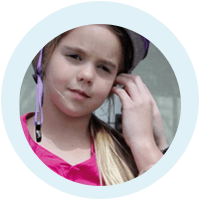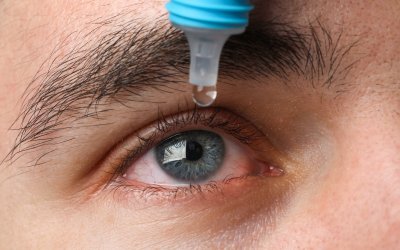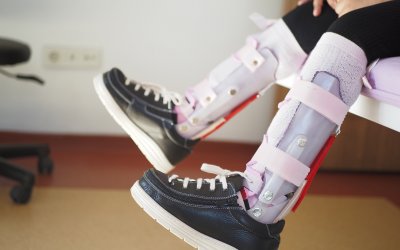Stem cell case studies
Read our stem cell case studies to discover how umbilical cord cells have been used to treat conditions such as leukaemia, stroke, brain injury and autism.
Stem cell case studies
Read our stem cell case studies to discover how umbilical cord cells have been used to treat conditions such as leukaemia, stroke, brain injury and autism.
Stem cell case studies
Read our stem cell case studies to discover how umbilical cord cells have been used to treat conditions such as leukaemia, stroke, brain injury and autism.
Since 1988, cord blood stem cells have been used to treat a growing number of diseases and disorders.
The first transplant was for a 5-year-old boy called Matthew Farrow, who received his sister’s cord blood to treat Fanconi anaemia. Children with the condition are only expected to live into their teenage years, but Matthew is now a healthy 30-year-old with a family of his own.
Fanconi anaemia is just one of more than 80 potential diseases cured by cord blood and in the past three decades, there have been more and more stem cell success stories from all around the world. You can find out more about these case studies below.

Jay’s journey
In 2016, little Jay Shetty took part in a pioneering clinical trial for cerebral palsy at Duke University in the USA. After he was diagnosed with cerebral palsy at a young age, his parents decided to store his brother’s stem cells with Cells4Life.
In 2017, Jay received those cells in a single injection that was overseen by Dr Joanne Kurtzberg from Duke’s medical centre.
“His muscle rigidity has reduced, and his vision has improved,” says Jay’s mother, Shilpa. “We definitely noticed a difference.”

Jamie’s story
In 2018, Jamie’s beautiful five-year-old boy received an intravenous cord blood infusion at Duke University Hospital for autism. A year later, his mother has noticed significant improvements.
“On an effort scale of 1 to 10, we spent 8 managing his autism before the stem cells, we now spend less than 3,” says Jamie. “To us that’s really something and it’s enough to have made a decision we took 10 years ago, totally worth it. He is now reading small books, writing between lines…he is socialising to a point where he goes up to unknown kids in the park and asks “do you want to play?” The way I saw it, the cost was less than £100 per year over 20 years and may be the equivalent of taking just one less family vacation in that whole time.”
Jamie shared her family’s inspirational stem cell case study with us in 2019.
Other stem cell case studies

Cord blood stem cells treat severe combined immune deficiency
Doctors in Shanghai used cord blood to treat an eight-month-old baby with severe combined immune deficiency (SCID). They injected little Ranbao with haematopoietic stem cells, and it is hoped that a full recovery from the condition might be possible. In China, there have been more than 4,000 such stem cell transplants – and that number continues to increase all the time.

Cord blood stem cells treat autism
In Tbilisi, Georgia, doctors injected cord blood into the spinal cord of little Nikoloz, who was diagnosed with autism at the tender age of two. Since receiving therapy, his parents say their boy has transformed. Before, he was unable to speak and was prone to aggressive outbursts. Now, he communicates in short sentences, commands a wide vocabulary of words, and attends a regular school.

Cord blood stem cells treat sister’s sickle cell anaemia
Carol Mulumba was diagnosed with sickle cell anaemia at three weeks old. Her parents chose to store her sibling’s cord blood and at the age of six, Carol received a stem cell transplant after receiving chemotherapy. Just one month after her transplant, Carol was cured of sickle cell disease.

Cord blood stem cells treat diamond-blackfan anaemia
When Dillon Low was born, he was almost immediately diagnosed with Diamond-Blackfan anaemia, a rare inherited blood disorder where bone marrow fails to create red blood cells. The condition meant that Dillon had to spend much of his young life in hospitals but when his mother gave birth to his younger brother, she decided to bank his cord blood stem cells. Dillon received those cells in an infusion, which has restored his health and overcome his fatigue.

Cord blood stem cells treat neuroblastoma
Way back in 2002, cord blood banking was a relatively new concept but Frances Everall’s parents were among the first to store their baby’s stem cells. When Frances was diagnosed with stage 4 neuroblastoma at the age of 4, she underwent six cycles of radiotherapy and chemotherapy before receiving a bone marrow transplant. She then received a cord blood transfusion to boost her immune system and in 2008, went into remission.

Cord blood stem cells treat brother’s leukaemia
Keegan Doheney was diagnosed at two years old with leukaemia and went into remission a few years later. Mindful that he could suffer a relapse, his parents chose to bank his younger brother’s cord blood. When Keegan was five and a half, he relapsed and received the cord blood stem cells to cure his leukaemia.

Cord blood stem cells treat paediatric stroke
Peyton Connelly suffered a massive stroke as a baby, and doctors told her parents there was nothing they could do. Fortunately, they had stored Peyton’s cord blood stem cells at birth and signed up for a cord blood therapy which involved a stem cell infusion. “100 per cent, she’s mentally fine,” said Shelley. “It’s amazing. If this is what we can achieve with cord blood reinfusion I want it available to more people; I want it available to anyone that wants it.”

Cord blood stem cells treat acquired brain injury
Sparrow Morris almost drowned in a pool when she was 20 months old, and doctors could not find a pulse for 47 minutes. Her brain had been starved of oxygen for so long, that her chances of survival seemed slim. When she did wake, little Sparrow was unable to sit and was fed through a tube; she underwent speech therapy, physiotherapy and occupational therapy, and slowly made progress.
Then, Duke University treated Sparrow with an infusion of her cord blood stem cells and the next day, Sparrow started talking again. “She was talking and wanting to play and smiling all day long”, her mother Tonya said. “It was amazing that we banked Sparrow’s cord blood, not thinking that we would ever see it be used but we used it for Sparrow and it was there for her and only because it was her own cord blood we got to use it.”
Request your welcome pack
Request your welcome pack
Why choose Cells4Life?
Cells4Life is the only placenta storage bank in the UK. We are also the UK’s most popular cord blood bank, having stored more UK samples than any other.
Everything about our service has been designed to provide your baby and family with the best long-term health protection possible.
Here are just a few of the benefits to placenta banking with Cells4Life:
- More cells for more treatment opportunities
- Multiple sample and dual location storage
- Most comprehensive range of services
- Year-round collection
- Dedicated couriers
- Industry-leading technology
- HTA-licensed
Why choose Cells4Life?
Cells4Life is the only placenta storage bank in the UK. We are also the UK’s most popular cord blood bank, having stored more UK samples than any other.
Everything about our service has been designed to provide your baby and family with the best long-term health protection possible.
Here are just a few of the benefits to placenta banking with Cells4Life:
- More cells for more treatment opportunities
- Multiple sample and dual location storage
- Most comprehensive range of services
- Year-round collection
- Dedicated couriers
- Industry-leading technology
- HTA-licensed
Why choose Cells4Life?
Cells4Life is the only placenta storage bank in the UK. We are also the UK’s most popular cord blood bank, having stored more UK samples than any other.
Everything about our service has been designed to provide your baby and family with the best long-term health protection possible.
Here are just a few of the benefits to placenta banking with Cells4Life:
- More cells for more treatment opportunities
- Multiple sample and dual location storage
- Most comprehensive range of services
- Year-round collection
- Dedicated couriers
- Industry-leading technology
- HTA-licensed
Latest stem cell case studies news
Discover more stem cell case studies, news and cord blood clinical trials by reading our stem cell blog.
Umbilical Cord Stem Cell Eye Drops Could Offer Relief From Dry Eye
A recent phase 1 trial has found that umbilical cord stem cell eye drops could help relieve the symptoms of dry eye for patients with a severe, treatment-resistant form of the condition. What is dry eye? Dry eye is a chronic condition where either the eyes do not...
First Cord Blood Treatment for Cerebral Palsy Performed in Australia
A six-year-old girl named Zara has become the first child in Australia to receive an infusion of her own stored cord blood as treatment for cerebral palsy outside of a clinical trial. Experts hope that this milestone will pave the way towards broader availability,...
Could Cord Tissue Stem Cells Help Manage Type 2 Diabetes?
Managing type 2 diabetes can be a daily challenge, and scientists are always looking for better ways to help patients suffering from the condition. One such area of study is regenerative medicine, more specifically cellular therapy, with researchers investigating...





